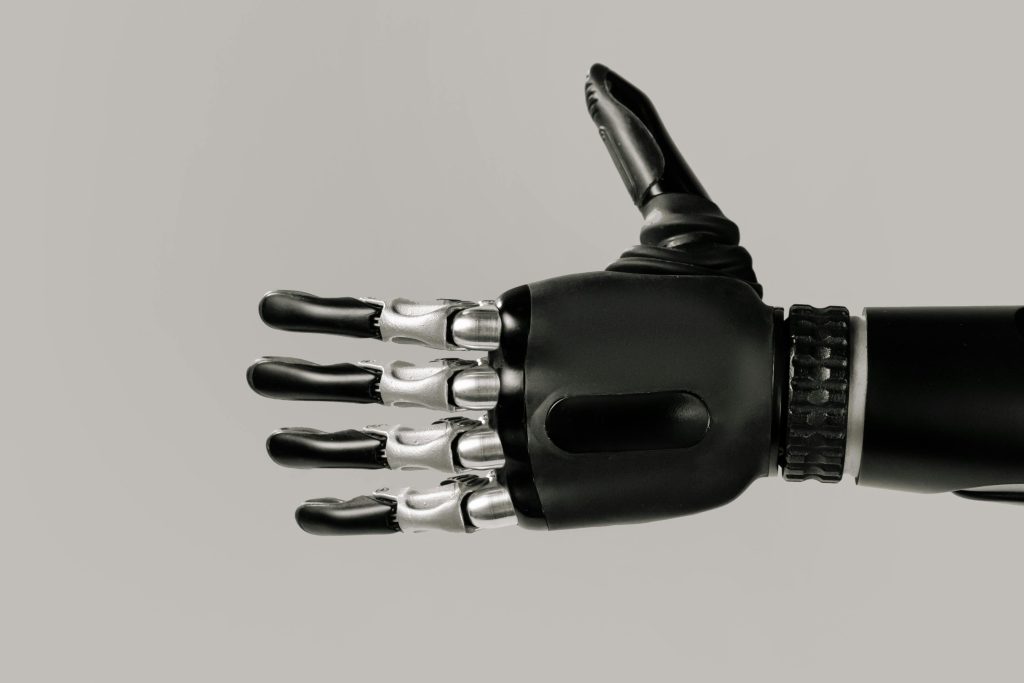
Touch Isn’t Just a Sense. It’s Personal.
Touch is more than pressure or pain. It’s how we connect with each other and with ourselves. When you live in a disabled body, people often treat touch like a medical issue or something to avoid. They forget that for us, touch is how we navigate the world. It’s how we stay safe, feel grounded, and sometimes, how we remember we exist.
This is the third piece in the Five Senses series, and it might be the most intimate. We already covered what we see and hear. Now let’s talk about what we feel.
Smart Gloves That Help You Feel More Than Movement
Touch isn’t always about softness. Sometimes, it’s about being able to hold your coffee cup without spilling it. Or finally zipping your jacket by yourself. Or feeling just enough sensation to know your hand is there.
For those of us with spinal cord injuries, CP, or muscle weakness, smart gloves aren’t gadgets. They’re keys to independence.
Neofect Smart Glove
Designed for stroke survivors and people with mobility limitations, this glove works with a tablet and tracks how your hand moves. You play simple games to build strength and retrain movement. It turns therapy into something that doesn’t feel like therapy.
NeuroGlove
This one uses sensors and electrical stimulation to help your hand move—even when your brain and body aren’t fully connecting. It’s for those moments when you know what you want to do, but your fingers just won’t listen.
MusicGlove by Flint Rehab
This glove turns hand therapy into a musical game. You grip and tap along with a rhythm, and over time, those repetitive movements actually bring back function. It’s fun, and it works. And honestly, it makes rehab feel less like a chore.
“It wasn’t just about movement. It was about feeling capable again.”
— Jorge, C7 incomplete injury
This isn’t about restoring what was lost. It’s about rediscovering what’s still there. And that’s powerful.
The Cushion That Doesn’t Just Support You—It Listens
Wheelchair users know the pressure game too well. Sit too long in one position, and it starts to build. Ignore it, and it becomes a sore. Wait too long, and it becomes an emergency.
Pressure mapping cushions are the quiet heroes. They don’t make a big show, but they protect your skin like nothing else.
How It Works
A thin sensor mat slides between your cushion and your body. It reads how your weight is distributed and sends that info to an app or tablet. If one area’s getting too much pressure, you’ll see it on the screen. You don’t have to guess. You just know when to shift.
What to Check Out
- BodiTrak gives you a live heatmap of your pressure zones
- ROHO Smart Check helps you fine-tune your air cushion with a simple handheld tool
- RideWorks by Ride Designs creates custom cushions based on 3D scans of your body
“One small adjustment thanks to my pressure app—and I avoided what used to send me to the hospital.”
— Andre, power chair user newsletter subscriber
This is more than comfort. This is your skin, your posture, your health. Protected.
Adaptive Fashion That Feels Like a Hug
We deserve clothes that comfort, support, and still make us feel stylish. Some brands are finally making that happen by designing tech-forward fashion for real disabled bodies.
Sensoria Smart Socks
These socks monitor your step, balance, and movement. They’re used in fall prevention and stroke recovery and can alert caregivers when something’s off. They’re also machine washable and totally wearable.
Ministry of Supply Phase Change Shirts
These shirts adjust to your body’s temperature. If you get too hot or too cold, the fabric adapts so you don’t have to constantly layer up or strip down. It’s smart clothing for people who want less fuss.
CalmWear Compression
This clothing provides gentle, consistent pressure that helps reduce anxiety, improve posture, and regulate sensory responses. It’s like a soft hug that doesn’t squeeze too hard or get in your way.
“I finally found a jacket that supports my anxiety and makes me feel like I actually dressed on purpose.”
— Avery, ambulatory wheelchair user
We don’t just want functional fashion. We want it to fit our lives and our personalities.
Why This Touch Tech Matters
Some people think touch is a luxury. But for many of us, touch is tied to pain, survival, or absence.
When tech helps us reclaim that sense, it’s doing more than just buzzing or shifting. It’s reminding us that we deserve to feel good in our bodies.
And let’s not pretend you’re not already using this tech. That tap on your smartwatch? That heated seat in your car? Those were disability innovations long before they hit the mainstream. So when we invest in these tools, we’re not chasing convenience. We’re protecting our health. We’re honoring our bodies. We’re giving ourselves the power to feel fully alive.
💬 Catch Up on the Five Senses Series:
- 👁️ Tech That Lets Us See
- 👂 Tech That Lets Us Hear
- Next up: Smell.
💋 From Your Latina Diva on Wheels
This series is written for all of us who’ve been told we feel too much, expect too much, or ask too much.
If this article made you pause, smile, or see your body in a new way, I hope you’ll stay connected.
💌 Subscribe so you don’t miss what’s next in the Five Senses series.
☕ Buy Me a Coffee to keep these bold, real conversations going.
Because feeling isn’t a weakness. It’s a superpower.